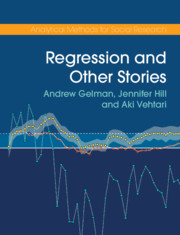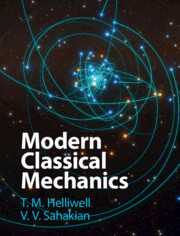Refine search
Actions for selected content:
36809 results in Cambridge Textbooks
Glossary and Topical Index
-
- Book:
- The Cambridge Introduction to Narrative
- Published online:
- 04 December 2020
- Print publication:
- 03 December 2020, pp 243-263
-
- Chapter
- Export citation

Regression and Other Stories
-
- Published online:
- 01 December 2020
- Print publication:
- 23 July 2020
-
- Textbook
- Export citation

Modern Classical Mechanics
-
- Published online:
- 30 November 2020
- Print publication:
- 10 December 2020
-
- Textbook
- Export citation

Thermodynamics
- Concepts and Applications
-
- Published online:
- 30 November 2020
- Print publication:
- 27 February 2020
-
- Textbook
- Export citation

Structural Geology
-
- Published online:
- 30 November 2020
- Print publication:
- 03 March 2016
-
- Textbook
- Export citation

Fundamentals of Geophysics
-
- Published online:
- 30 November 2020
- Print publication:
- 02 January 2020
-
- Textbook
- Export citation
Part I - Theory
-
- Book:
- An Introduction to Community and Primary Health Care
- Published online:
- 15 December 2020
- Print publication:
- 30 November 2020, pp 1-154
-
- Chapter
- Export citation
1 - Community and primary health care
- from Part I - Theory
-
-
- Book:
- An Introduction to Community and Primary Health Care
- Published online:
- 15 December 2020
- Print publication:
- 30 November 2020, pp 3-20
-
- Chapter
- Export citation
23 - Refugee health nursing
- from Part 3 - Community and primary health care roles
-
-
- Book:
- An Introduction to Community and Primary Health Care
- Published online:
- 15 December 2020
- Print publication:
- 30 November 2020, pp 364-376
-
- Chapter
- Export citation
17 - Community mental health nursing
- from Part III - Community and primary health care roles
-
-
- Book:
- An Introduction to Community and Primary Health Care
- Published online:
- 15 December 2020
- Print publication:
- 30 November 2020, pp 284-297
-
- Chapter
- Export citation
19 - School and youth health nursing
- from Part III - Community and primary health care roles
-
-
- Book:
- An Introduction to Community and Primary Health Care
- Published online:
- 15 December 2020
- Print publication:
- 30 November 2020, pp 311-327
-
- Chapter
- Export citation
Preface
-
- Book:
- An Introduction to Community and Primary Health Care
- Published online:
- 15 December 2020
- Print publication:
- 30 November 2020, pp xix-xix
-
- Chapter
- Export citation
Acknowledgement of Country
-
- Book:
- An Introduction to Community and Primary Health Care
- Published online:
- 15 December 2020
- Print publication:
- 30 November 2020, pp i-ii
-
- Chapter
- Export citation
2 - Empowering individuals, groups and communities
- from Part 1 - Theory
-
-
- Book:
- An Introduction to Community and Primary Health Care
- Published online:
- 15 December 2020
- Print publication:
- 30 November 2020, pp 21-40
-
- Chapter
- Export citation
7 - Interprofessional practice
- from Part I - Theory
-
-
- Book:
- An Introduction to Community and Primary Health Care
- Published online:
- 15 December 2020
- Print publication:
- 30 November 2020, pp 121-138
-
- Chapter
- Export citation
6 - Gendered health
- from Part I - Theory
-
-
- Book:
- An Introduction to Community and Primary Health Care
- Published online:
- 15 December 2020
- Print publication:
- 30 November 2020, pp 100-120
-
- Chapter
- Export citation
27 - Correctional nursing
- from Part 3 - Community and primary health care roles
-
-
- Book:
- An Introduction to Community and Primary Health Care
- Published online:
- 15 December 2020
- Print publication:
- 30 November 2020, pp 410-420
-
- Chapter
- Export citation
2 - Empowering individuals, groups and communities
- from Part I - Theory
-
-
- Book:
- An Introduction to Community and Primary Health Care
- Published online:
- 15 December 2020
- Print publication:
- 30 November 2020, pp 21-40
-
- Chapter
- Export citation
26 - Home-based care
- from Part III - Community and primary health care roles
-
-
- Book:
- An Introduction to Community and Primary Health Care
- Published online:
- 15 December 2020
- Print publication:
- 30 November 2020, pp 399-409
-
- Chapter
- Export citation
14 - Case management
- from Part 2 - Skills for practice
-
-
- Book:
- An Introduction to Community and Primary Health Care
- Published online:
- 15 December 2020
- Print publication:
- 30 November 2020, pp 240-254
-
- Chapter
- Export citation
